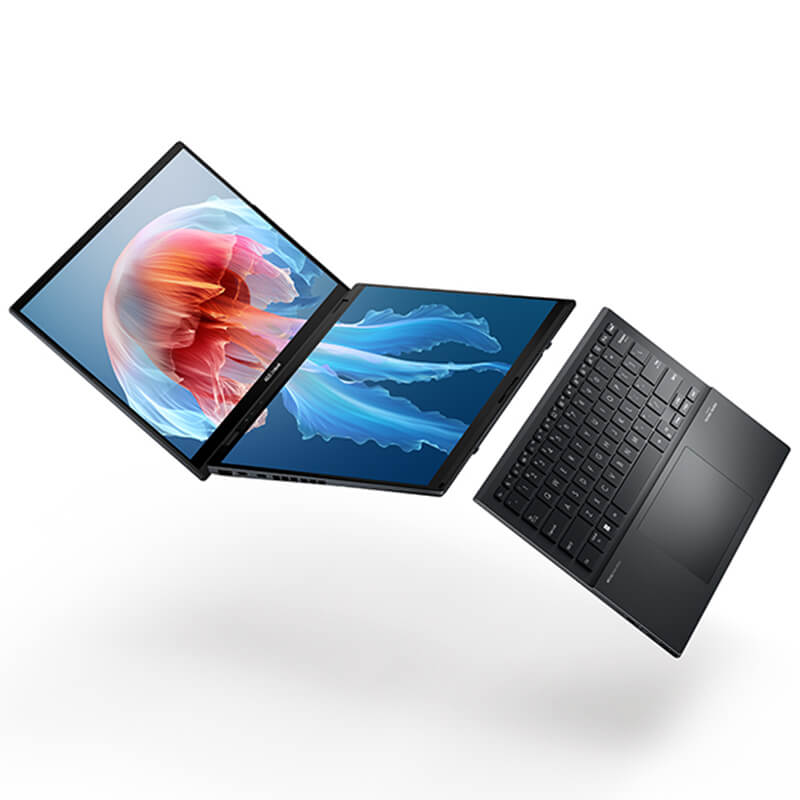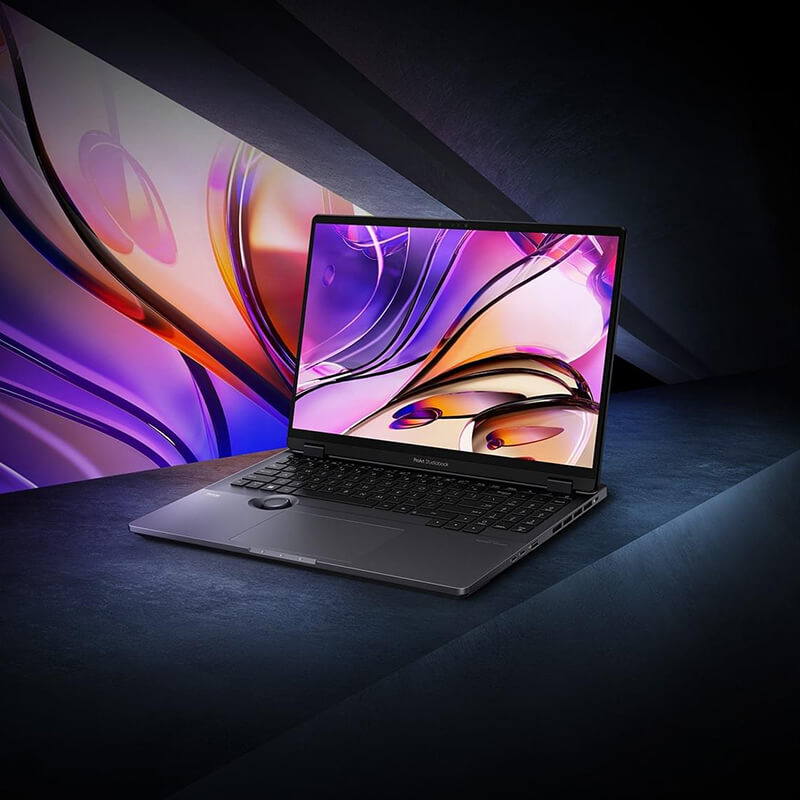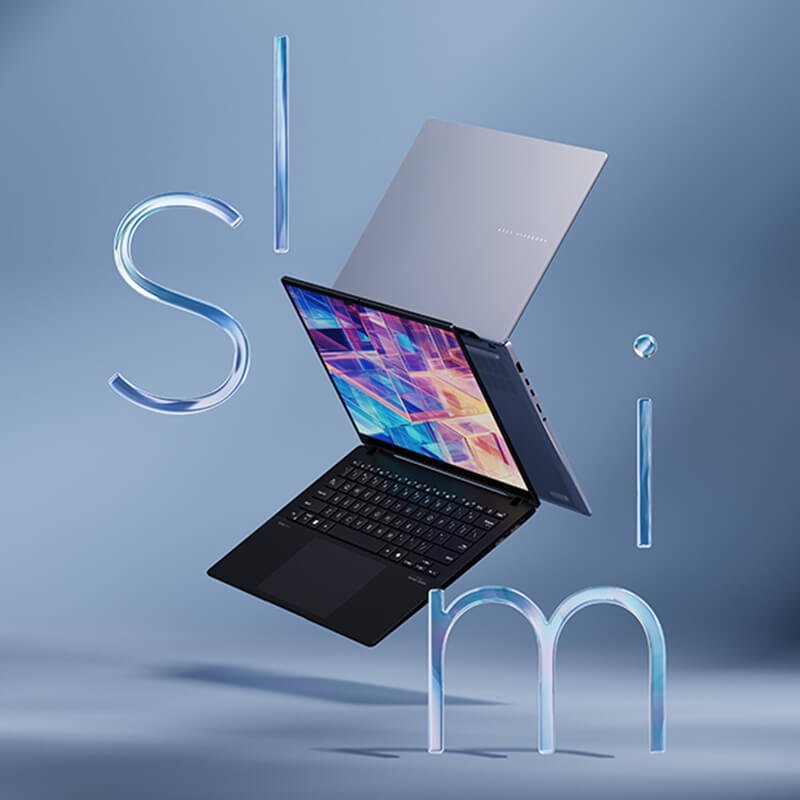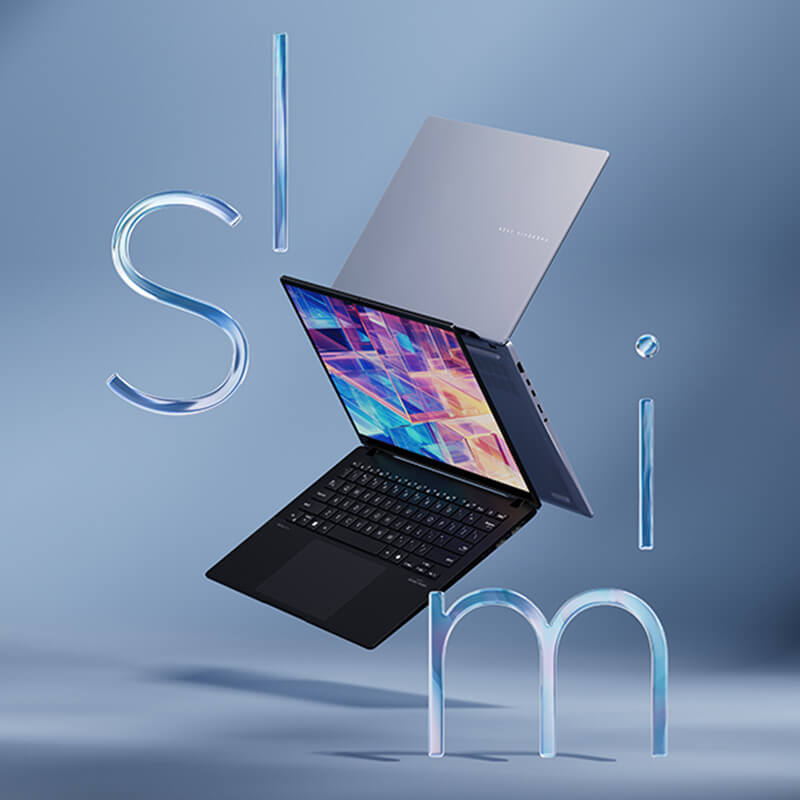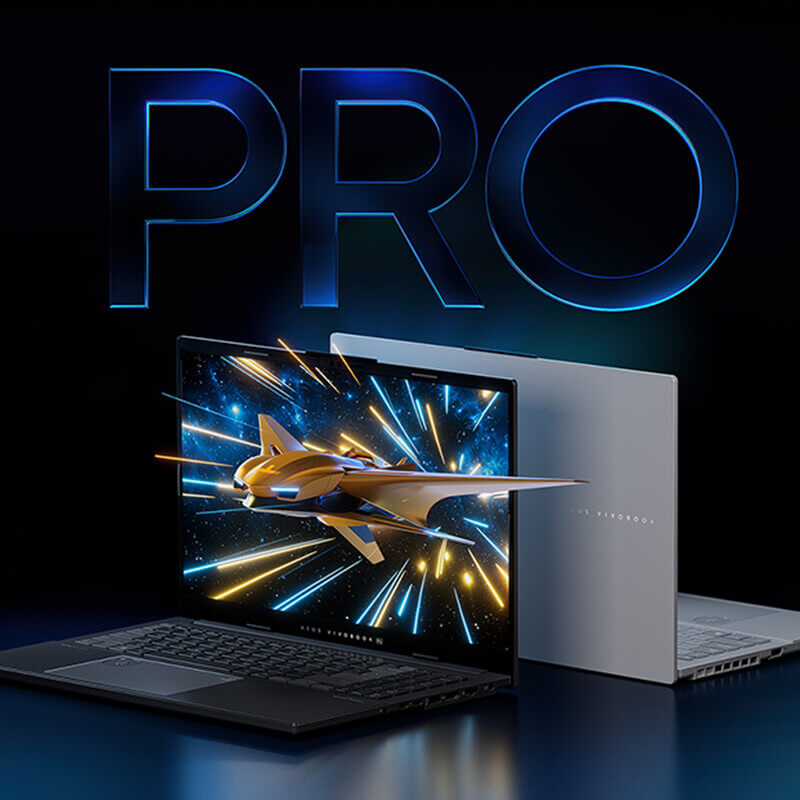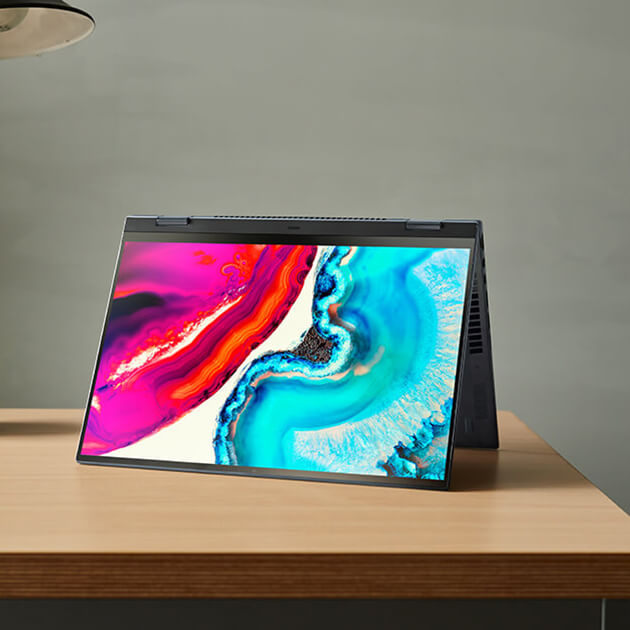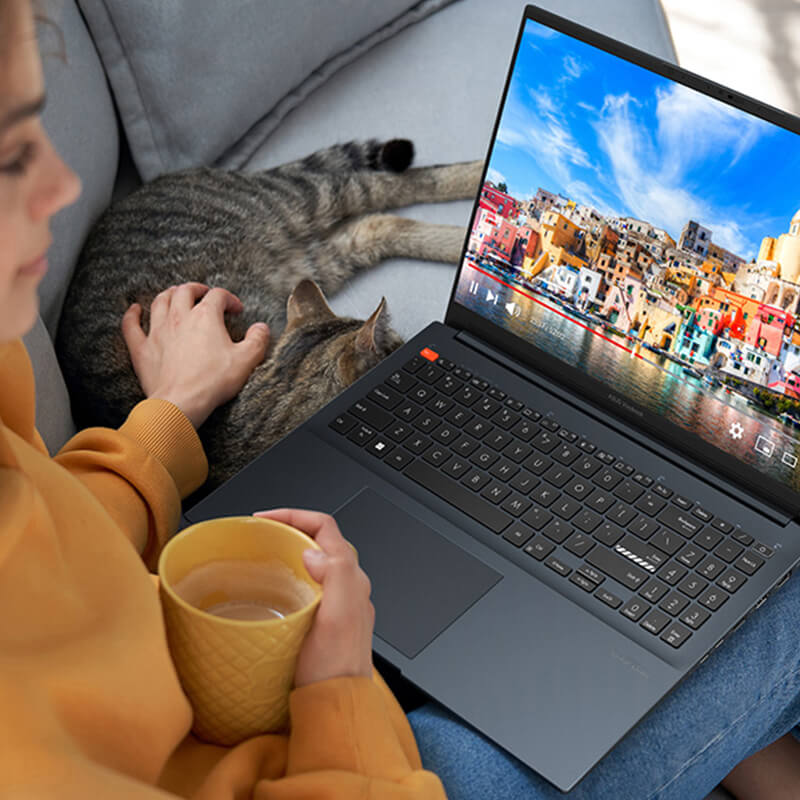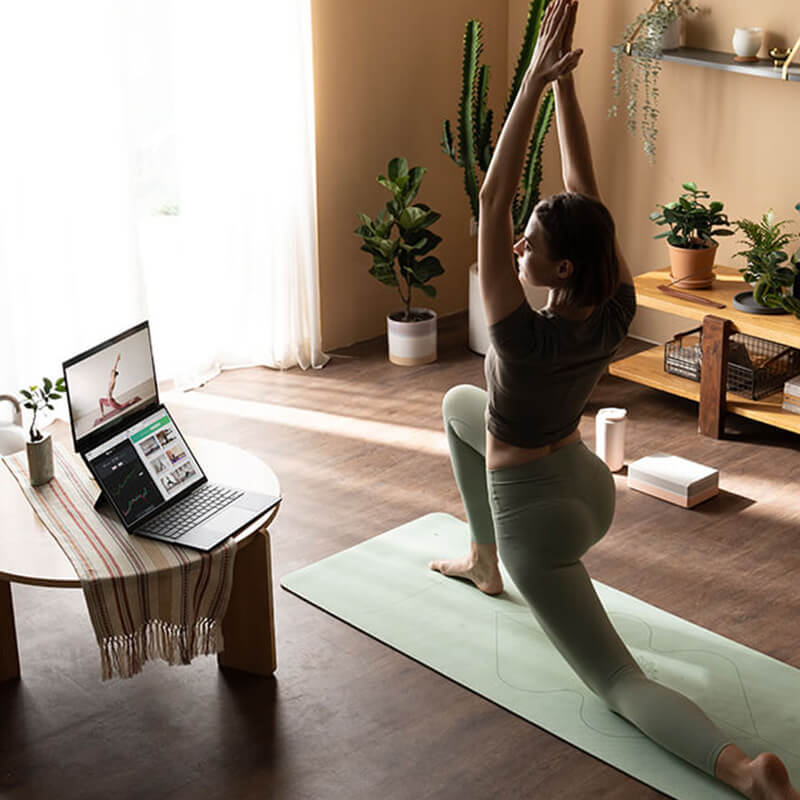Effects of Excessive Blue Light Exposure
Blue light exists in nature and is present in sunlight, helping us
stay awake and regulating our biological clock. Blue light normally
isn’t problematic for human eyes. However, overexposure can
potentially cause issues.
Disrupted Sleep Cycles
Prolonged screen time before sleep can disrupt sleep cycles because
the blue light emitted from your device tricks the brain into
thinking that it’s still daytime. This suppresses the generation of
melatonin, which is a sleep hormone. Prolonged screen time is almost
inevitable in modern life, luckily there are options to reduce the
amount of blue light you are in contact with.
ASUS Lumina OLED panels reduce blue light emissions by 70% compared
to traditional LCD screens. OLED panels also have a higher
brightness perception, which allows users to view content at lower
nits* without sacrificing clarity and color vividness. The reduced
number of nits indicates lower brightness levels and contributes to
less blue light exposure to the eyes, which results in reduced
visual discomfort.
*A unit of measurement for brightness
Retina Damage
In general terms, the pixels on device screens produce three colors:
red, green, and blue. You may ask why red and green light aren’t
mentioned when speaking of exposure to light from a device screen.
This is because the wavelengths of red and green light often fall
between 500 – 600 nm, while the wavelength of blue light is much
shorter, at around 400 – 500 nm. Blue light is most harmful at 415 –
455nm. In any case, shorter wavelengths indicate higher energy and
higher energy can cause cone cell damage.
Cone cells are concentrated at the center of our retina and are
photoreceptors that help us see colors. According to
a study conducted by Gifu Pharmaceutical University
in which mice cone cells were exposed to red, green, and blue light,
blue light is proven to be more harmful to cone cells. Only 20% of
the mice cone cells survived after a 24-hour exposure to blue light,
which shows a dramatic difference compared to the survivability of
approximately 100% of mice cone cells under red and green light
exposure for the same time period.
Children Are Most Vulnerable
As we age, the reception to light also changes in our eyes. Aged
lenses in the eyes absorb less visible light overall, which means
younger lenses are more vulnerable to potential damage from blue
light exposure.
Research
shows that approximately 60% of the received blue light passes
through the lenses to the retina of a five-year-old child, while
only 20% of the same blue light reaches the retina of a 60-year-old
adult. Most children today are frequently viewing screens. Because
ASUS Lumina OLED panels significantly reduce the amount of blue
light, they can provide a significant benefit ― especially to
younger users.
Seeing Is Believing: The Bandpass Filter Experiment
To demonstrate that up to 70% of blue light is reduced on ASUS
Lumina OLED panels, compared to traditional LCD screens, ASUS
conducted a Bandpass Filter experiment. For this experiment, a
bandpass filter allowing only harmful blue light (436 nm) to pass
through was placed over the camera lenses of an ASUS Zenfone. Then
an ASUS Lumina OLED display and an LCD screen display were placed
side by side and viewed together through the Zenfone camera lenses
covered with a bandpass filter.
A dramatic difference was shown in the brightness of the two
screens: the OLED panel was almost completely dark while the LCD
display was very bright. This confirmed that a significant amount of
blue light was passing through the bandpass filter from the LCD
display, and much less blue light was emitting from the OLED panel.
ASUS: The Leading Brand in OLED Laptops
As the leading global brand for OLED laptops, ASUS offers OLED
solutions for users of all types including advanced and casual
creators, professionals, students, and laptops for daily use. ASUS
Lumina OLED laptops are certified by TÜV Rheinland and SGS for low
blue light. They are also certified Flicker-Free by TÜV Rheinland
for a more comfortable viewing experience.
ProArt Studiobook 16 OLED (H7604)
is a great, powerful option for advanced creators who work with 3D
modeling on software such as Blender or Cinema4D.
ASUS Vivobook Pro 15 OLED (N6506)
is a practical, reliable solution for casual and professional
creators, at an affordable price. The highly innovative
Zenbook DUO (2024) UX8406
features a groundbreaking design, with two full 14-inch OLED panels, providing twice as much screen space and four usage modes – dual screen mode, laptop mode, desktop mode, and sharing mode. This dual screen laptop is ideal for multitaskers or users who need a lot of flexibility. For everyday users who need a solution for basic tasks, online meetings and entertainment, ASUS Vivobook S 16 OLED (S5606) or ASUS Vivobook S 14 OLED (S5406) are ready to enhance modern life.
All of these models are OLED ASUS laptops with low blue light, providing visual comfort and vibrant viewing experiences in both bright and dim environments.
When you’re ready to buy, check out the ASUS Store for laptop deals.
Discover 2024 ASUS Laptops








